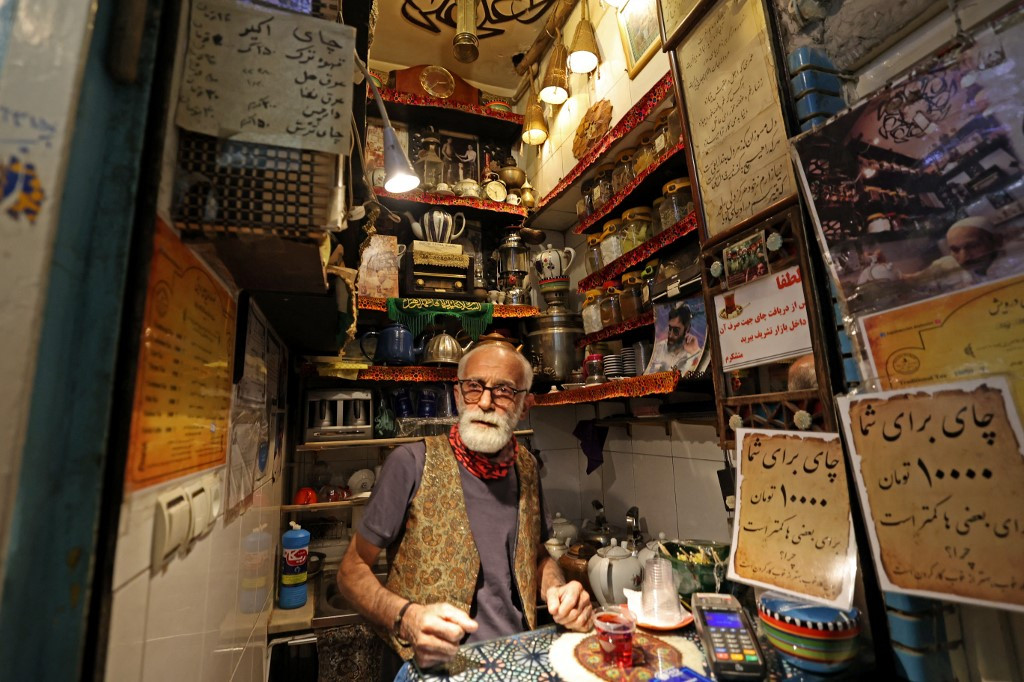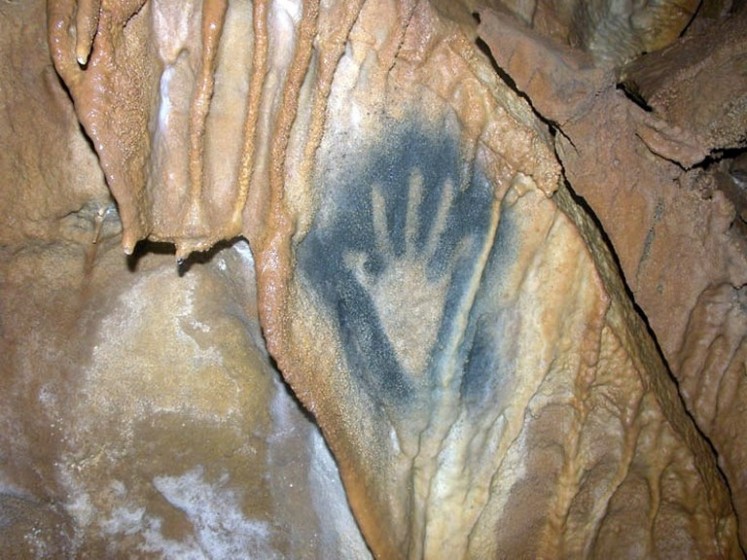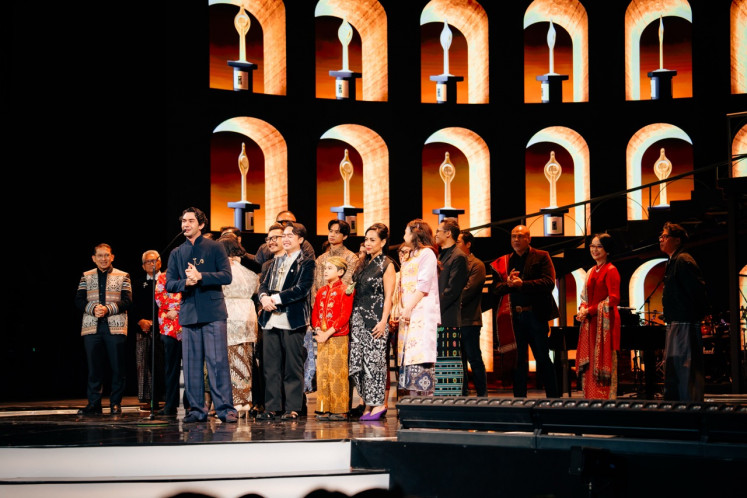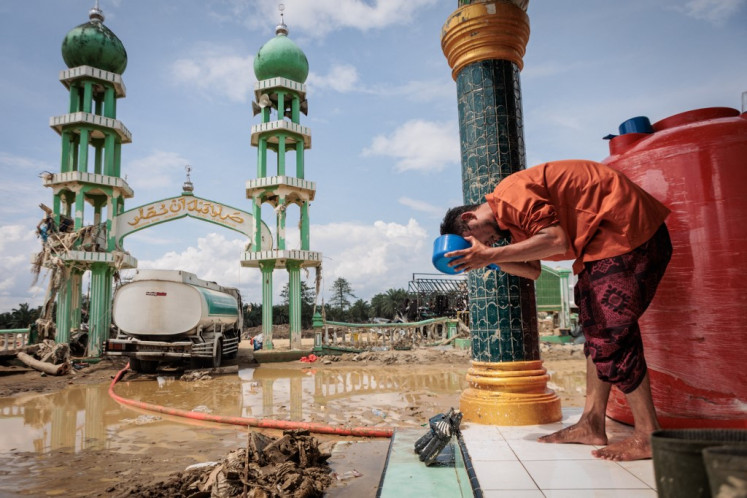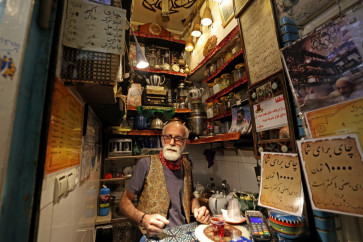Popular Reads
Top Results
Can't find what you're looking for?
View all search resultsPopular Reads
Top Results
Can't find what you're looking for?
View all search resultsTreats and tradition in Tehran's oldest, tiniest teahouse
Tucked in an alleyway of the Grand Bazaar, the smallest and oldest teahouse in Tehran is invisible from the main street. And yet it is the most famous among tea connoisseurs in the Iranian capital.
Change text size
Gift Premium Articles
to Anyone
W
ith his trimmed beard, red scarf and bronze-coloured waistcoat, Kazem Mabhutian serves a steady stream of customers in the smallest and oldest teahouse in Tehran, but at 63 years old, he is counting on God to find him a successor.
Tucked in an alleyway of the Grand Bazaar, wedged between a clothes shop and the door of a mosque, his 1.5-square-metre chaikhaneh (tea house) is invisible from the main street.
And yet it is the most famous among tea connoisseurs in the Iranian capital.
In between pouring glasses of steaming brew for his customers, Mabhutian tells the century-old story of the fabled Haj Ali Darvish Tea House with pride.
His father Haj Ali Mabhutian, nicknamed the Dervish or Beheshti, or "He who deserves paradise", was born in Hamedan in western Iran, he says.
"He came to Tehran at the age of 15 to earn a living. He bought this shop from Haj Hassan who had opened it in 1918."
Arranged around him are cups and teapots, boxes of tea and a samovar water-heater. There is an antiquated radio, a paraffin lamp, statuettes of dervishes, and gold-coloured sticks of Nabat, a saffron-scented barley sugar.

